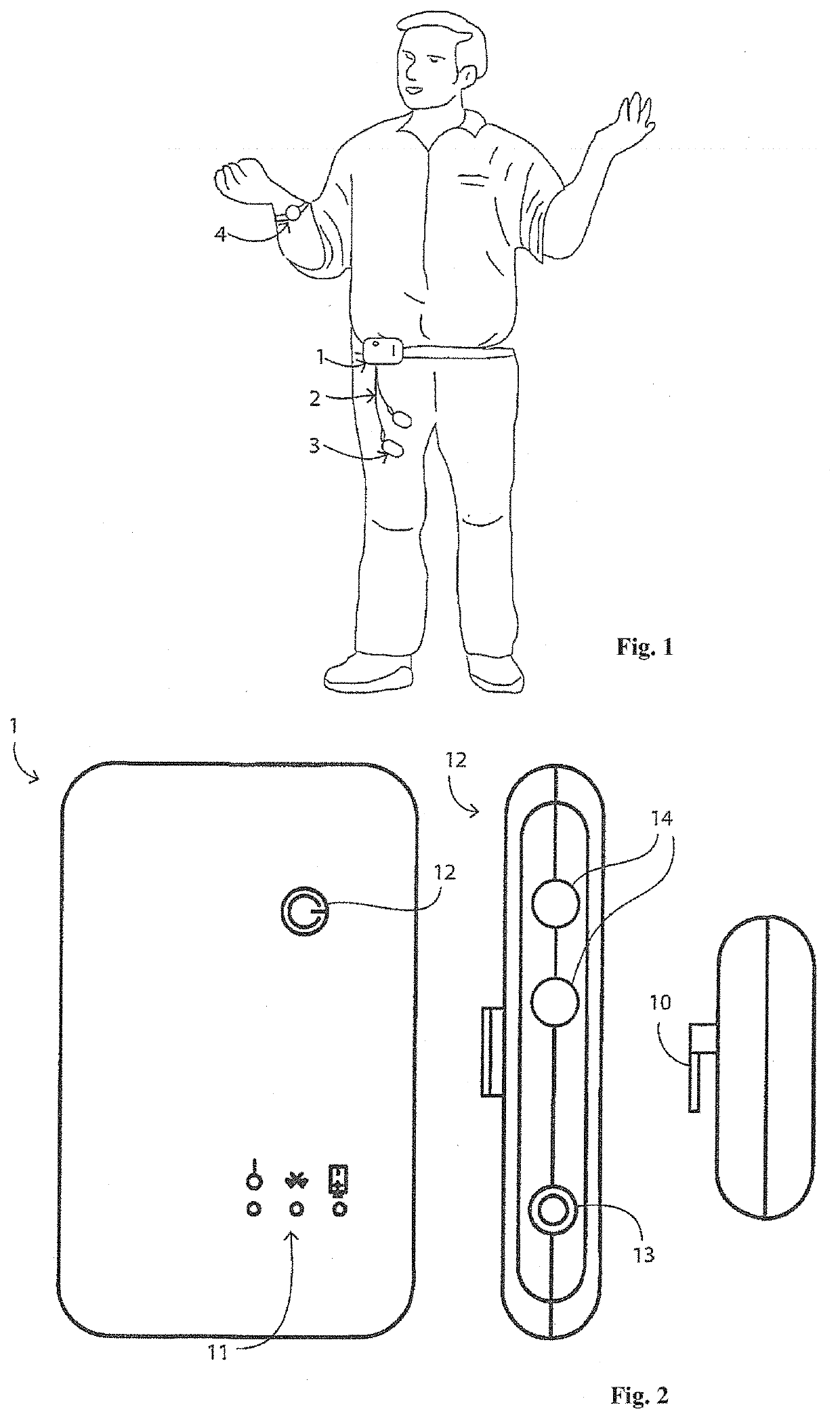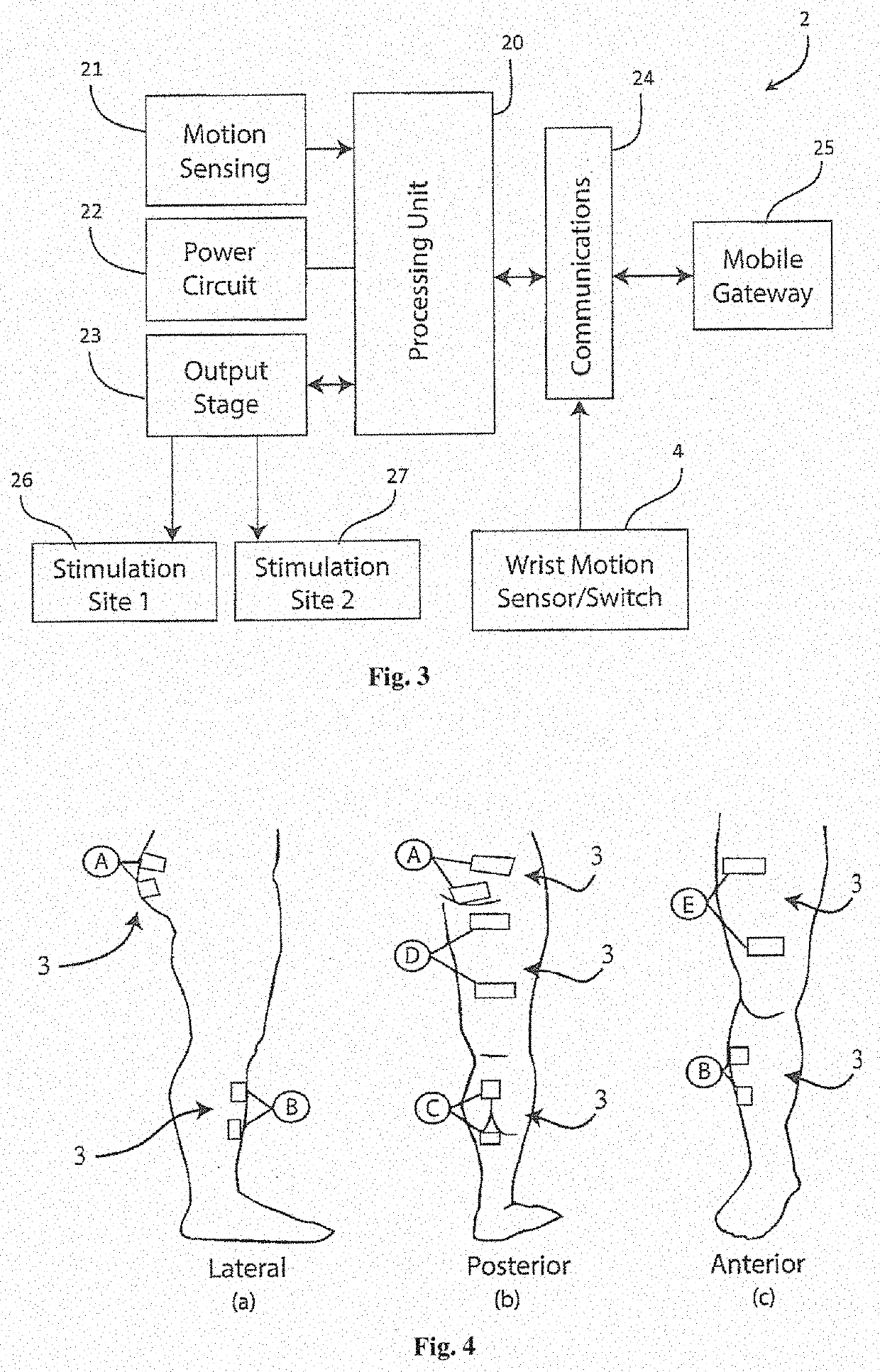Apparatus for management of a parkinson's disease patient's gait
a parkinson's disease patient and apparatus technology, applied in the field of gait management, can solve the problems of increasing public health and socioeconomic challenges, reducing the capacity for self-care, and reducing the performance of activities of daily living, so as to prevent the occurrence of gait freezing, and relieve or prevent gait abnormalities.
- Summary
- Abstract
- Description
- Claims
- Application Information
AI Technical Summary
Benefits of technology
Problems solved by technology
Method used
Image
Examples
Embodiment Construction
BRIEF DESCRIPTION OF THE DRAWINGS
[0114]The invention will be more clearly understood from the following description of some embodiments thereof, given by way of example only with reference to the accompanying drawings in which:—
[0115]FIG. 1 is a diagram illustrating positioning of components of a system or “apparatus” of the invention on a patient;
[0116]FIG. 2 is a set of front, plan, and side views of a control unit of the system;
[0117]FIG. 3 is a block diagram of the system;
[0118]FIGS. 4(a), (b), and (c) are diagrammatic views showing possible locations of surface stimulation electrodes of the system;
[0119]FIG. 5 is a diagram showing a cross-section of a human upper leg with sensory receptors in the skin;
[0120]FIG. 6 is a plot illustrating a single electrical stimulation burst;
[0121]FIG. 7 is a pair of plots, (A) burst cueing activation in response to FOG detection, in which a typical burst consists of 3 stimulus bursts, (B) continuous stimulation applied while a FOG episode is pr...
PUM
 Login to View More
Login to View More Abstract
Description
Claims
Application Information
 Login to View More
Login to View More - R&D
- Intellectual Property
- Life Sciences
- Materials
- Tech Scout
- Unparalleled Data Quality
- Higher Quality Content
- 60% Fewer Hallucinations
Browse by: Latest US Patents, China's latest patents, Technical Efficacy Thesaurus, Application Domain, Technology Topic, Popular Technical Reports.
© 2025 PatSnap. All rights reserved.Legal|Privacy policy|Modern Slavery Act Transparency Statement|Sitemap|About US| Contact US: help@patsnap.com



